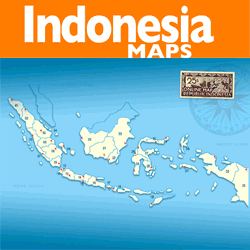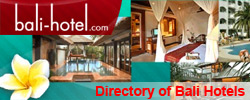Solo

Surakarta or more famous as Solo is lying across in fertile plain terrain along the longest river in Java, Bengawan or River Solo. Flanked by mountain volcanoes Merapi and Merbabu in the north, and mount Lawu in the southeast border, is famous as a stronghold and center of Javanese culture and tradition. Surakarta, is the cradle of Javanese culture, with two royal houses in one single city: the Kraton of Solo and the Mangkunegaran, a principality. Descendants of these two royal houses are still considered leaders of Javanese culture and traditions. Majestic ceremonies and royal festivals are still held with great affectation nowadays. Surakarta or Solo (550000 inhabitants) draws its name from the longest river of Java, which passes in this city. It was the capital of the kingdom of Mataram from 1745 to 1755. There are many Becak (rickshaws decorated with naive scenes) croos the city.
Solo offers an incredible list of eateries also popular far beyond the city. Solo today remains a distinctly Central Javanese with an elegance all its own. It is one of the centers of batik and other Javanese fabrics, and souvenir hunters may find exquisite 'objects d'art" and ornate trinkets in the local markets. Those interested in old, Javanese culture and art should not miss Solo. Solo is called the city that never sleeps. From the evening throughout the whole night one can always find something to eat or buy, as vendors of all kinds as well as small food-stalls remain active and open 24 hours. Home of two royal houses with centuries of power and influence over the city. There are nice inns and hotels in Selo for accommodation. This place was a famous holiday resort of Surakarta Royal Families.
Solo is Surakarta's commercial as well as its administrative center, and produce from the surrounding desa fills the markets every day. Solo produces cigarettes, herbal medicines and various other light industry products, but batik is far and away the most important manufacturing activity in the city. Batik is a traditional textile working process involving the use of wax to cover the cloth in patterns and thus control the areas affected by dying. In the traditional process, batik tulis ("written batik") hot wax is applied with incredible patience and skill with an instrument that looks like a pipe but is used like a pen. The women and girls sit circled around an often-smoky little burner that heats the wax.
Many of the larger houses participate in the batik industry, with an area set aside for a covey of from 10 to 30 women and girls, who usually come from the village (desa). Really skilled workers are generally old, and the present level of batik production is not likely to continue in economically developing Java as alternative, less demanding activities absorb more of this cheap labor.

Indonesia’s Heritage Collection: Van Der Wijck Fort -Kebumen
One of the many Dutch heritage forts, Van Der Wijck Fort is unique because the entire building is made of red brick. You’ve seen? This fort with an octagonal plan looks more charming with its red color, compared to Dutch forts which are generally colorless or white. It looks like the fort from the front and inside uses red bricks, but still with the characteristics of a Dutch fort in Indonesia which has a large building structure, such as windows, doors and rooms. With an area of 3606,625 square meters,…
10 Most Unique Tourist Villages in Magelang, Makes You Don’t Want to Go Home
Magelang has a number of temples as the favorite tourist destinations. Besides Borobudur, you can visit several other places, such as tourist villages. There are several tourist villages around Borobudur Temple with a unique and interesting atmosphere. In addition to saving nature, you can also get to know the culture behind it. Temanggung VillageTemanggung Village was viral because it was called Nepal van Java. The view of the village at the foot of Mount Sumbing is really epic. Tanjungsari VillageIf you are interested in the process of making honey, you…
Amazing Tourist Destinations in Jepara, Central Java
Punuk Sapi BeachPunuk Sapi Beach is also popularly known as Pantai Lemah Abang which means “red land beach”. It is named so because this beach is indeed filled with mounds to hills with red soil that at first glance looks like a cow’s hump (punuk sapi is cow’s hump in English). This beach has black sand, but it is also beautiful like the white sand beaches. There are hammocks and swings that you can use to relax, as well as take pictures from a height. This beach is located in…
Arjuna Temple, A Relic of Hindu in the Ancient Mataram Kingdom
Arjuna Temple complex is the most photographed and visited of the surviving temples on the Dieng Plateau. Situated just a few hundred meter from the homestays in Dieng village, they are an obvious first stop on a tour of the sights in the area. Though they are far from the most imposing of Javanese temples, they are the earliest surviving Hindu temples in Central Java, so they are of great importance historically. Built a century or two before the great temples around Yogyakarta and Magelang, they mark the original phase…









